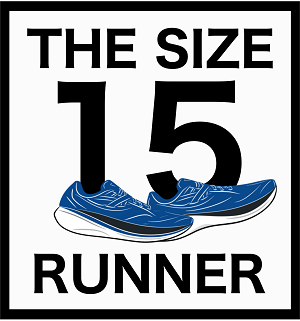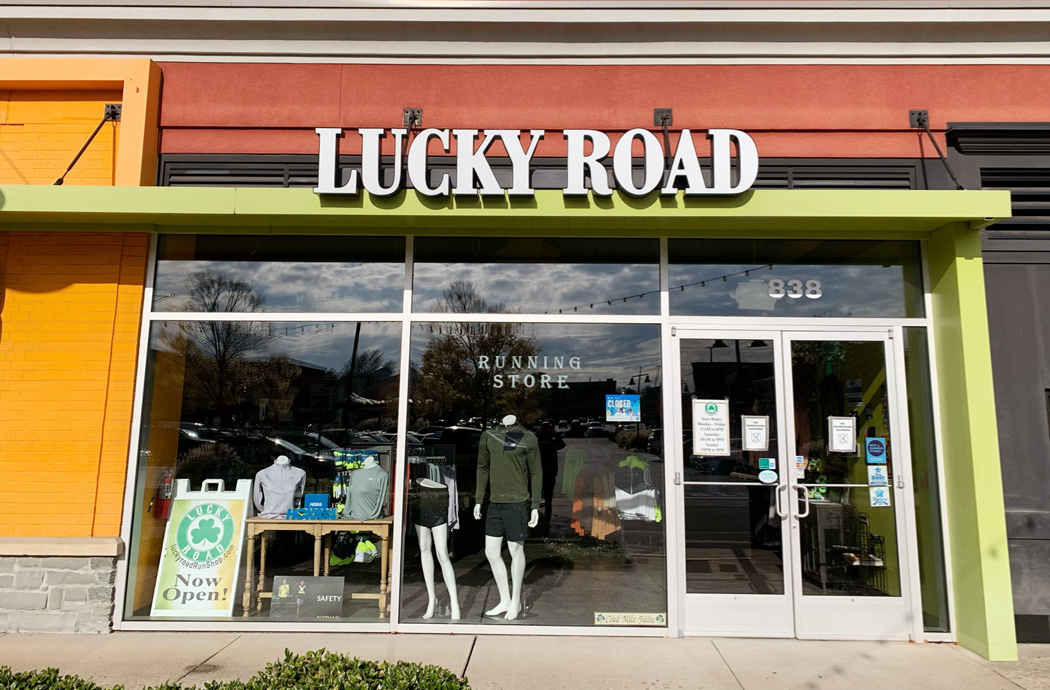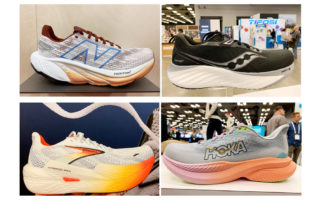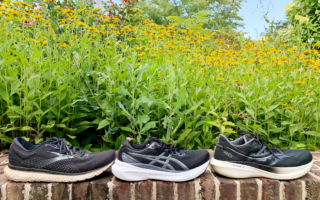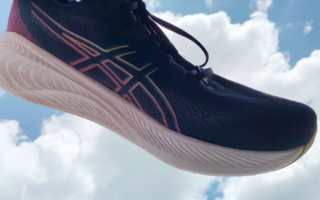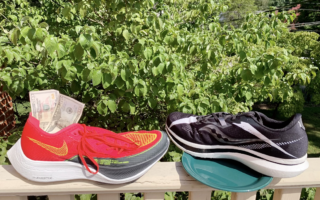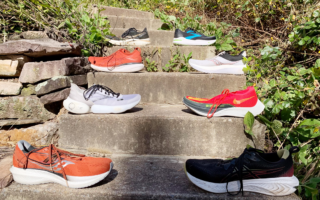There’s no more important decision in life than buying running shoes. We’ve all purchased running shoes we wish we hadn’t. To help runners avoid shoe buyer’s remorse, I’ve so graciously outlined the most common decision traps for you to avoid. As usual, enjoy the tv and movie references sprinkled throughout.
According to Harvard Business Review, bad decisions often happen because of the way the decisions were made. The alternatives were not clearly defined, the right information was not collected, the costs and benefits were not accurately weighed. Make the right shoe decisions by watching out for these crucial decision traps.
Seeking simplicity traps
Self interest
Self interest occurs when the decision-maker has attachments they hold on to that distort the decision-making process.
Looking at (and judging) you, runner who runs in one shoe brand and refuses to branch out and try others. Your desired shoe brand isn’t your sole-mate—they’re only “with you” for your money. They don’t love you back, and they’re not faithful to you. So, why be loyal to them? Try any and every shoe brand out there, even if their name sucks, the logo is derivative, their marketing is repulsive, or if their shoes look ridiculous.
You may just find “shoe love” when you least expect it. There are so many other fish in the sea—you just need to swim, or rather, run to meet them. Just don’t think you’re Aquaman (or Jason Momoa), and try to talk to these “fish.” They don’t want to hear from you. Money talks, and the only thing the brands want to hear is the “cha-ching” of their cash register. God, you really are a sucker…fish.
Status quo
Status Quo trap is striving to maintain things as they are, even when it may be significantly less than optimal.
You know who you are, runners who wear the same shoe model year after year. Or the ones who wear shoes that were “new” five years ago. Get a grip on reality and get a shoe with a better outsole grip, a grippingly excellent midsole foam, and an upper that doesn’t grip your foot so tightly that it traps all your gross foot sweat.
Be the “key grip” of your own running movie and don’t be afraid to update your equipment—shoes—on the “set” of your go-to running routes. Otherwise, you may endure a (gut) punch from a real key grip, ordered by none other than Tropic Thunder’s Less Grossman.
Diversity, equity, and inclusion aren’t meant just for people—did you know they were originally developed to describe a well-rounded running shoe rotation?
Pursuing patterns traps
Snap judgment error
Snap Judgment Error is the unconscious reliance on appearance or other surface attributes to make a decision.
When it comes to buying running shoes, we’re all guilty of love at first sight. You know the shoe—it’s the one you can’t take your eyes off. The one you daydream about what it would look like to have the pair—not by your side, but rather, at your feet—in public. The first one you think about when you wake up in the morning and the last one on your mind before you fall asleep at night. Oh, and every other waking moment of the day. The shoes’ release date can’t come soon enough!
Unfortunately, often times, looks are deceiving. And when you actually get this pair on foot, it will be on your mind for all the wrong reasons. Namely, because it sucks. Looks do matter, don’t get me wrong, but not all running shoes that glitter are gold, silver, or even bronze. Some are just pure shit. Congrats! Like, Matthew McConaughey and Kate Hudson in 2008’s lackluster rom-com Fool’s Gold, all you discovered was, well, fool’s gold. Quick! Fire up the ridiculously attractive acting duo’s other lackluster rom-com, How to Lose a Guy in 10 Days for inspiration on how to return this running shoe in 10 days.
Availability decision trap
The Availability decision trap is when we tend to be influenced by recent events when assessing our options.
Although the grass is always greener, contrary to popular belief, the new running shoe is not always sweeter. Just because it’s release day for your favorite brand’s daily trainer, doesn’t mean you have to buy this newer model. Especially when it’s just a minor update to the outsole. Who cares about the outsole, anyway? Buyer beware: The new model may look a bit more attractive, but the ride has not changed one bit.
Last year’s model is on sale, and priced where it should have been when it originally went on the market. You do realize running shoes are vastly overpriced, correct? Do not “Come on down” because The Price is Not Right, and Bob Barker ain’t coming back from the grave (RIP) to amend it. The plot of 2002’s The Sum of All Fears may concern nuclear weapons, but the sum of all runners’ fears is wasting a large sum of money by buying running shoes that absolutely bomb.
Undoing uncertainty traps
Groupthink
Groupthink is when the social pressures for conformity and cohesion in a group override one’s ability to to engage in independent thinking.
There’s no clearer example of this than when shoe reviewers overhype the latest offering from one of the industry’s biggest players. You see it heavily lauded in YouTube reviews, greatly buzzed about by r/RunningShoeGeeks on Reddit, and made to look cooler than they actually are on Instagram reels. And this is all before the shoe is even released to the public.
Resist the temptation to follow, and lead a new movement recognizing that no running shoe is worthy of such praise. Understand that, regardless of how good a pair is, just like in life, no shoe—or anything—will ever meet your expectations. It’s impossible. Even if you’re happy with the shoe, you’ll always find something wrong with it: the laces are too short, the upper isn’t breathable enough, the outsole is slippery in wet conditions, etc. If the shoe was truly great, they wouldn’t update it every year with improvements.
All running shoes are on an endless hamster wheel, running towards nothing. What is the meaning of life, anyway? Perhaps we ought to watch Monty Python’s 1983 film by the same name, to find out.
Overconfidence
Overconfidence is an arrogance that leads us to believe we are immune to the difficulties that befall everyone else.
This occurs when we overestimate a running shoe’s performance before purchase and underestimate the risk—burning upwards of $160 on the newest pair that falls flat. We ought to really be more modest, when buying running shoes and in life. And there’s no better way to humble ourselves than by letting our hubris cloud every thought in our head telling us not to buy this overpriced, overrated, and overproduced pair.
Tim Robinson struck comedic gold with his hit show “I Think You Should Leave” but you went searching for the “golden” pair of running shoes and all you “struck” were rocks and sand—a rock-hard midsole with an outsole that feels like running on sand. I Think You Should Leave this pair at home and never wear it again.
So, the next time you’re buying running shoes, keep these decision traps in mind before you trap your feet by strapping yourself to a pair that blows.
